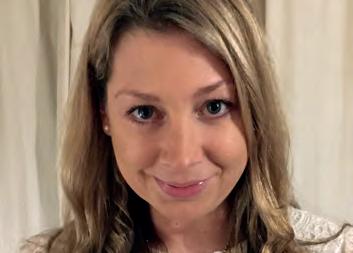
4 minute read
THE FOUNDATION
The Foundation Message from Kathryn Bartram
Probably one of the trickiest questions you can ask a Development Director is ‘what do you do?’
Advertisement
Depending on the week, the day or the minute it could be any number of different things. Our office officially covers all the Fundraising, Marketing, Alumni Relations, Events, Outreach, and support of our 70+ Foundation bursary pupils, but we also help with higher education, careers, admissions, building work designs, strategic plans and a myriad of other things that go on at a School which don’t ‘fit’ anywhere else. Each year we run upwards of 170 events, initiatives, and publications. It is exhausting but incredibly rewarding and I wouldn’t have it any other way.
Central to all of this, however, remains the Foundation.
At a recent strategy away day I set our Governors the task of coming up with a 15-second ‘elevator pitch’ for the Foundation. Once they were able to get past my audacious use of an Americanism (‘lift pitch’ doesn’t roll off the tongue quite so easily), what emerged was an affirmed vision of what the Foundation stands for and how we are fundamentally different from other bursary programmes.
In short, Reed’s is a Foundation with a School, rather than a School with a Foundation and, as a charity, our core focus is on vulnerability rather than merely social mobility. The importance of those two principles cannot be understated; they are the essence of our ethos and our values, they drive our strategic decision making, and they frame our educational and pastoral care agenda.
In my role I have the unique vantage point of seeing every aspect of the Foundation. On a day-to-day basis it is the daily care of the pupils and their families. I have the privilege of getting to know the children, watching them grow and transform at the School, shedding the traumas of their pasts to discover who they are and what they want their lives to become.
Importantly though, I also see the Foundation from a very high level, sitting on Governors’ meetings and working regularly with the Chairman and Headmaster. We are incredibly fortunate with our Governors in their dedication to the Foundation and the intentions of Andrew Reed. I have seen, time and time again, when they are grappling with a complex decision they will step back and ask ‘what does this mean for the Foundation,’ ‘is that what Andrew Reed would have wanted?’ or ‘is this in line with our values?’… and those answers guide their choices which, at times, are very difficult ones to make. It is inspiring to be a part of those meetings.
Foremost in the challenges we face is the paradox of success. As the School gets stronger and stronger how can we protect the future of the Foundation? This may seem incongruous but is indeed a real challenge. There are three primary issues the Foundation is currently facing.
First, is academic: with applications of nearly 600 for 100 places and many pupils receiving private tuition to help with entry exams, how do we ensure that our Foundation pupils, who would not have had these privileges, get recognised for their academic potential rather than past performance?
Second, as fees continue to rise we risk the middle classes being priced out of Reed’s. How do we continue to maintain the wealth diversity across the School and avoid the risk of having only the very rich and the very poor?
And finally, but crucially, is financially. The Foundation costs nearly £1.5 million each year to run and we are exceptionally dependent on external funding from trusts and foundations as well as long-term external benefactors for support. However, as the School’s reputation grows in stature, there is a risk that externally the School’s performance blurs the Foundation’s differentiation from standard bursary programmes at other top schools, thus putting these funding streams in jeopardy. We must ensure now that the distinctiveness of the Reed’s Foundation is clearly conveyed and other sources of income are bolstered, particularly from Old Reedonians, Parents and the Endowment.
In order to achieve this, the Foundation must be perceived as a ‘foundation’ independent of the School, whilst at the same time maintaining the prominence of the Foundation, its ethos and values within the School. In any plan going forward, these two aims must be carefully balanced to avoid losing the distinguishing features of both the School and Foundation.
These are difficult issues and the answers are not straightforward, but it is absolutely essential we address them now before it is too late. A Foundation Board has been newly established to look at these very questions. The Board will comprise not only Governors and senior staff of the School, but also a former Appeal President, long-term benefactors, and Old Reedonians, Benn Shepherd (Blathwayt 1986) and Shahin Baghaei (Capel 2005).
In times of change I take heart from the past. Our predecessors at the School have not shied away from difficult decisions, but rather by staying true to our founder’s vision and integrity we have evolved to become who we are today. It is a heritage of which we should all be proud.
In short, Reed’s is a Foundation with a School, rather than a School with a Foundation and, as a charity, our core focus is on vulnerability rather than merely social mobility. The importance of those two principles cannot be understated; they are the essence of our ethos and our values, they drive our strategic decision making, and they frame our educational and pastoral care agenda.










